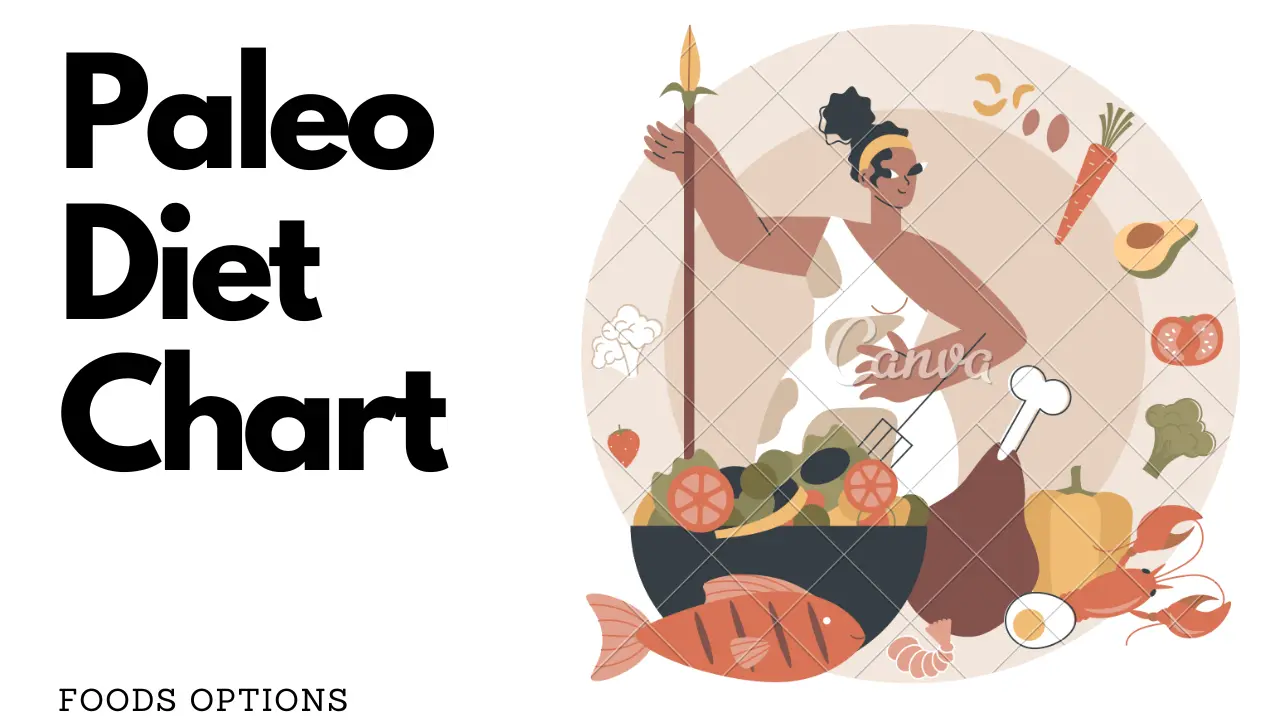Paleo diet
Paleo diet – When the food we ate in our daily life is carefully planned to achieve nutritional benefits then it is considered to be a diet. The diet is based on the concept where a nutrition expert plans the food menu in a way that helps the individuals dealing with a special phase of lifestyle. It helps in achieving the perfect blend of taste and nutrition. The diets can be of various types like a diet for a specific disease condition or a daily life diet. One of many diets is Paleo Diet.
a) What is the Paleo Diet?
The word ‘Paleo’ came from the Paleolithic era which dates back approximately two million years ago. This diet is based on the concept of ‘Stone-age Diet’ when humans used to ‘hunt’ animals for their food and ‘gather’ fruits and vegetables growing near them, naming the technique as hunting- gathering’. Hence, this diet majorly focuses on the consumption of lean meats, fruits, vegetables, fish, nuts, and oilseeds and avoiding foods like dairy, cereals, pulses, and legumes which are artificially grown and reared by humans.
In 1985, an article in The New England Journal of Medicine mentioned that humans are genetically programmed in such a way that they are more used to either a hunter-gatherer diet or an agriculture-based diet.
They claimed that the human genome did not evolve as fast as modern diets –an idea known as the discordance hypothesis.
This rapid and fast change in diet outpaced the body’s ability to adapt as a result, there are high incidences of various lifestyle disorders like diabetes, hypertension, coronary heart diseases, and cancer all over the world.
So, to fight these modern-day problems which arise due to drastic changes in the diets can be solved if we brought back the ‘hunter-gather stye diets, popularly known as paleo diets.
This diet focuses on the consumption of high protein (lean meats and fishes), moderate fat (nuts and oilseeds) and with little or no carbohydrates (fruits and vegetables).
The paleo diet attempts to apply concepts from evolutionary nutrition theories into a modern diet. There is no calorie-counting and little reliance on portion control.
It recommends avoiding processed food, refined sugars, legumes, dairy, grains, and cereals, and instead, it promotes the consumption of herbivores’ meat, wild fish, fruit, vegetables, nuts, and healthy saturated fat.
b) What to eat in Paleo diet to maximize the result?
People who want to follow paleo diet should consume:
Lean Animal Foods: Dieters are advised to get just over half their daily calories from animal foods but they should be from lean sources.
The Paleo Diet book provides a list of lean meats for guidance. They provide essential fatty acids and do not contain trans fatty acids and saturated fats hence maintaining levels of total cholesterol and triglycerides.
Eggs:
They should be limited to six to twelve per week due to the percent of calories from fat and ideally should be from free-range hens that are fed omega-3 enriched diets.
Fruits and vegetables:
They are very excellent sources of vitamins and minerals. Mango, tomato, carrots, broccoli and green leafy vegetables like spinach, fenugreek leaves provide vitamin A.
Fruits like oranges, tangerines are rich sources of vitamin C, they are rich in antioxidants like anthocyanin and anthoxanthin which help in preventing cancers.
Nuts and oilseeds:
They are good sources of fat-soluble vitamins like A, D, E and K. it helps in providing essential fatty acids like linoleic and linolenic acid, helping in maintaining the lipid profile in body, reducing the risk of coronary heart diseases and various types of cancer.
C) How the Paleo diet help with a medical condition?
1. Weight Loss
A higher intake of protein with the consumption of healthy and essential fats from nuts and fish helps in weight loss, this is even promoted by lowering the consumption of cereals.
Many studies claimed that paleo diets help with the loss of weight in individuals, many of them get rid of hard fat and successfully maintained ideal body weight for a long time.
Restriction of processed foods like cheese, ready-made and ready to cook snacks, soft drinks helped in weight loss.
It is recommended that hat people who have obesity be more mindful of their total fruit consumption and that people with metabolic syndrome avoid “high-sugar fruits” such as grapes, bananas, cherries, and mangos.
2. Celiac Disease
Patients with celiac disease have to avoid gluten as their body is unable to digest it, major sources of gluten being cereals like wheat, barley, and oats are restricted in paleo diet Chart .
3. Lactose Intolerance
The diet naturally restricts the consumption of milk and other dairy products, the major source of lactose, hence helping lactose intolerant people in gaining protein from other sources like lean meats.
4. Hypertension
Increased consumption of fruits and vegetables encourages a higher consumption of potassium which helps maintain normal blood pressure. Restricted processed foods lower the excess consumption of salt helping the patient.
5. Diabetes
Decreased insulin sensitivity in diabetic patients was combated with reduced consumption of cereals and millets hence, resulting in a low carbohydrate intake.
This reduced the demands and load on the pancreas and insulin, hence maintaining normal blood glucose levels as it has been observed that decreased insulin secretion led to an increase in sensitivity of insulin.
6. Cancer Prevention
Due to increased intake of fruits and vegetables, the cancer- fighting anti- oxidants are plenty in body helping.
7. Coronary heart diseases
The prevalence is lower due to the consumption of essential fatty acids like omega- 3 from sources like fish, nuts, and oilseeds.
It is discovered that the paleo diet significantly helps in lowering the levels of total cholesterol, bad cholesterol, triglycerides, and increased good cholesterol compared to a standard diet.
D) Food to avoid in Paleo diet
- Any dairy products like milk, butter, curd, yoghurt, buttermilk, cottage cheese etc.
- Grains, including barley, corn, millets like finger millet, oats, rice, rye, sorghum, wheat, and wild rice.
- Grain-like seeds, including amaranth, buckwheat, and quinoa
- Pulses and legumes, including peanuts, lentils, chickpeas, split peas and soy.
- Starchy vegetables, including tubers, cassava root, manioc, potatoes, sweet potatoes, Colocasia, tapioca, and yams.
- Salt-containing foods, including condiments, salted spices, pickled foods, and processed meats.
- Fatty meats.
- Sweets like cakes, whipped creams, candy, chocolates and brownies should be avoided at all costs.
- Sweetened beverages like soft drinks and bottled fruit juice.
- Artificial sugars like aspartame, sucralose.
E) Food to eat in Paleo diet
- Fruits like banana, mango, apple, Chikoo, orange, tangerines, grapes, etc.
- Vegetables like broccoli, cauliflower, cabbage, mushrooms, brinjal, ladyfinger, cucumber, capsicum, carrot, onion, and green- leafy vegetables like spinach, fenugreek leaves, etc.
- Nuts and seeds like almonds, cashews, walnuts, macadamia nuts, hazelnuts, cashews, sunflower seeds, pumpkin seeds, watermelon seeds, flaxseeds, chia seeds, sesame seeds, etc.
- Lean meats, especially herbivores’ meat like Beef, lamb, veal, pork, kangaroo, lean (lower salt) sausages: Dieters are advised to get just over half their daily calories from animal foods but they should be from lean sources.
- Fish, especially those rich in omega-3 fatty acids, such as salmon, mackerel, and albacore tuna
- Seafood like prawns, crab, lobster, mussels, oysters, scallops, clams.
- Eggs: Eggs should be limited to six to twelve per week due to the percent of calories from fat and ideally, should be from free-range hens that are fed omega-3 enriched diets.
- Oils from fruits and nuts, such as olive oil or walnut oil
- Beverages like green tea and coffee are allowed in moderation.
F) Drawback of Paleo diet
1. Human Genome adaptability
Some researchers even denied the concept behind paleo diet Chart which says that the human genome was unable to adapt to the fast and rapidly changing human diets.
They argued that the diets need variations so that it can help humans that need constantly adapting to the changing climate and environment.
2. Unsustainable diet
Foods like meat and fish are not very sustainable as they need lots of water and other resources to process hence, raising the point that paleo diet Chart are not sustainable as change is inevitable to one’s being.
3. Restriction of cereals
Another major argument that stood against paleo diets was that carbohydrates have a protein-sparing action which means that carbohydrates get metabolized first giving the individuals sufficient energy to carry on with their daily life activities.
If the requirements of carbohydrates needed by the body are not met then proteins have to be metabolized in order to provide energy, hence enabling them to perform the function of building and repairing tissues.
This resulted in criticism of discouraging the consumption of cereals as they are the major source of carbohydrates and fiber in the diet.
Not only this, some people consuming paleo diets suffer from bloating and indigestion due to the lack of appropriate amounts of fiber in their diets
4. Restriction of legumes
The Paleo Diet discourages consumption of legumes, which is another of the major food groups being rich in plenty of vitamins like niacin, riboflavin, other B- complex, and minerals like magnesium, calcium, iron, zinc with nutritional benefits.
One group of study participants rated the Paleo Diet more challenging to adhere to compared to the control diet as the lack of cereals and legumes unable the people to reach satiety and they feel hungry.
5. Excess protein consumption
with excess consumption of protein, comes many disadvantages like one can gain weight in the long run if the protein intake in not utilized properly and it will get stored on the body as fat while the surplus number of amino acids will be excreted.
Not only for that , if the ratio between carbohydrates and protein is not maintained as in the case of paleo diets, the people will suffer from diarrhea and dehydration.
Many studies have shown that higher consumption of protein also has the association with poor bone health. Patients with kidney disorders or weak kidneys if consuming paleo diets can suffer from dangerous consequences.
6. Deficiency of vitamins and minerals
The complete restriction of dairy products results in deficiency of calcium and vitamin D hence poor bone health increasing the risk of osteoporosis and osteomalacia.
Not only carbohydrates but cereals and legumes are sources of major protective minerals like selenium and zinc which act as anti-oxidants. Not feasible for all: The Paleo Diet restricts food groups that are commonly consumed, which can require extra planning when eating away from home.
The amount of time required for meal preparation may be unrealistic for some people. The Paleo Diet is not feasible for vegetarians or vegans as the main foods are meat and meat products.
The types of foods required by the Paleo Diet can be expensive; one study suggested that paleo diets are only for rich people as meat and meat products, fruits and vegetables and nuts are quite expensive and not easily affordable by middle-class and poor people.








